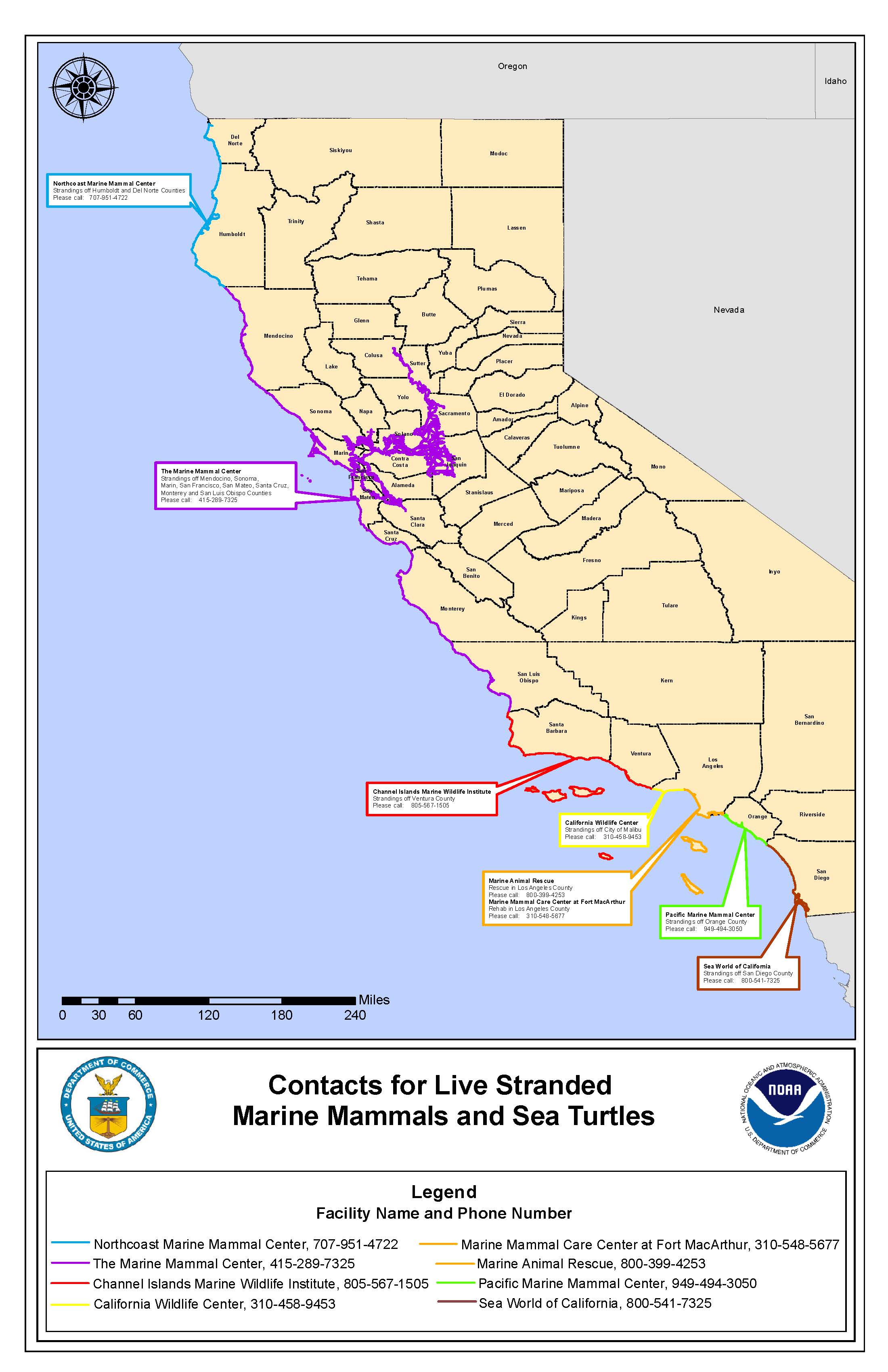Pseudo-nitzschia - C-HARM tells us where conditions are suitable for Pseudo-nitzschia spp. (all size classes) to grow well and where they might be more likely to produce domoic acid. In October, the probability of a Pseudo-nitzschia spp. bloom was still high all along the coast with low offshore probabilities in the Southern California Bight. Time series of the Harmful Algal Bloom Monitoring and Alert Program (HABMAP) data are plotted below for all of 2018 through October to give a seasonal perspective. For the month of October, these data show a peak in Pseudo-nitzschia abundance more in the latter half of the month at most sites, except the Santa Cruz Municipal Wharf where things were relatively quiescent. The increase at other stations reached "bloom" levels (~10,000 cells/L) and appears to have been a mixture of the larger ("seriata") and smaller ("delicatissima") size class of Pseudo-nitzschia. These size classes generally correspond to more toxigenic and non-toxigenic species, respectively. The highest CDPH measurements of Pseudo-nitzschia were along the Humboldt Coast, with moderate levels (<12% relative abundance) in the San Diego area and Santa Cruz Wharf, underscoring how variable these measurements can be.
Domoic Acid - C-HARM predicted the highest likelihood of particulate domoic acid (pDA) production in the Southern CA Bight, the offshore region of central CA, and to some extent in the nearshore zone of the North (Humboldt) Coast, consistent with high Pseudo-nitzschia counts from CDPH, although with lower probabilities than in the previous month of September. Note we do not make HABMAP measurements of DA north of Monterey Bay, and those that are available for October show low DA at the Santa Cruz Municipal Wharf, consistent with low nearshore C-HARM probabilities of pDA. Cellular domoic acid (cDA) predictions, which should tell us where Pseudo-nitzschia cells are likely to be most toxic on a per-cell basis, were still highest along the North Coast, although reduced along the Sonoma and central CA coastline relative to September. The latter is consistent with the September shellfish advisory in Humboldt County as well as the CDPH phytoplankton monitoring. Sea lion strandings from DA toxicosis recorded by The Marine Mammal Center in Sausalito went from one in September to five in October from San Luis Obispo to Santa Cruz, San Francisco, and Sonoma County. It is difficult to know in which offshore or nearshore environment the animals actually acquired the DA, but given that the offshore probabilities of DA from C-HARM are highest offshore along much of the coastline, that general region is a likely target.
Alexandrium - Much like the trend in the time series from the Harmful Algal Bloom Monitoring and Alert Program (HABMAP) data into September, Alexandrium spp. percent composition from CDPH showed minimal activity in October, and the HABMAP data were consistent with that. There have been no PSP alerts from CDPH or CDFW.
Mean Probability of Pseudo-nitzschia Bloom for Oct. 2018
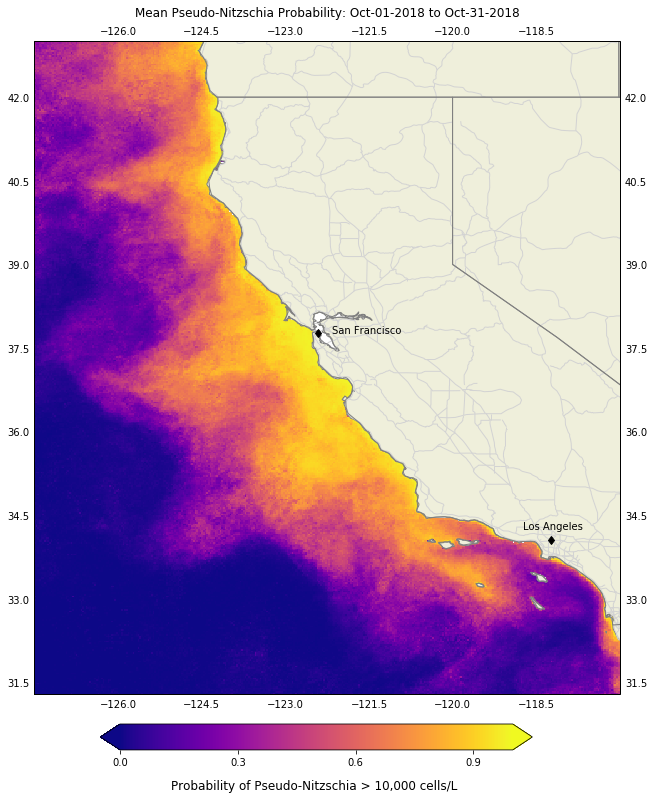
Mean Probability of Particulate Domoic Acid for Oct. 2018
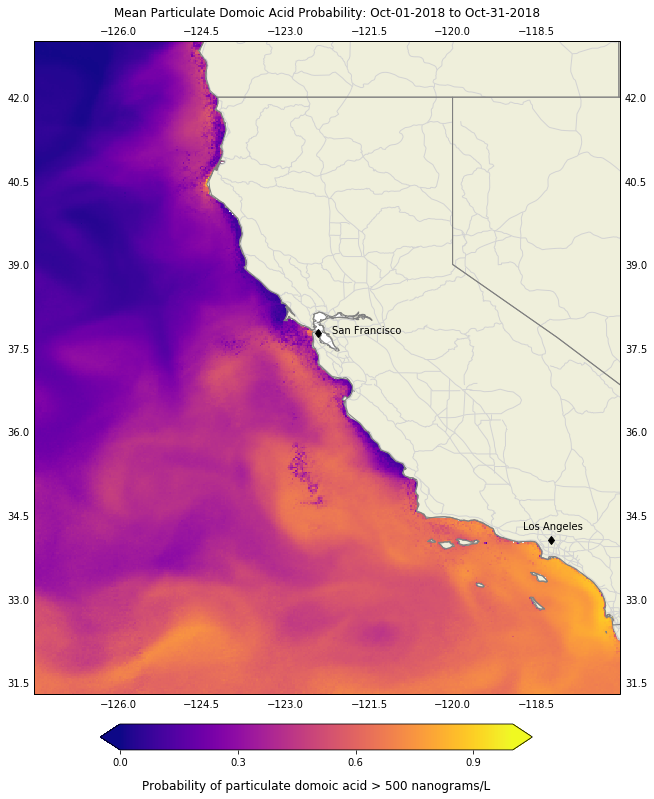
Mean Probability of Cellular Domoic Acid for Oct. 2018
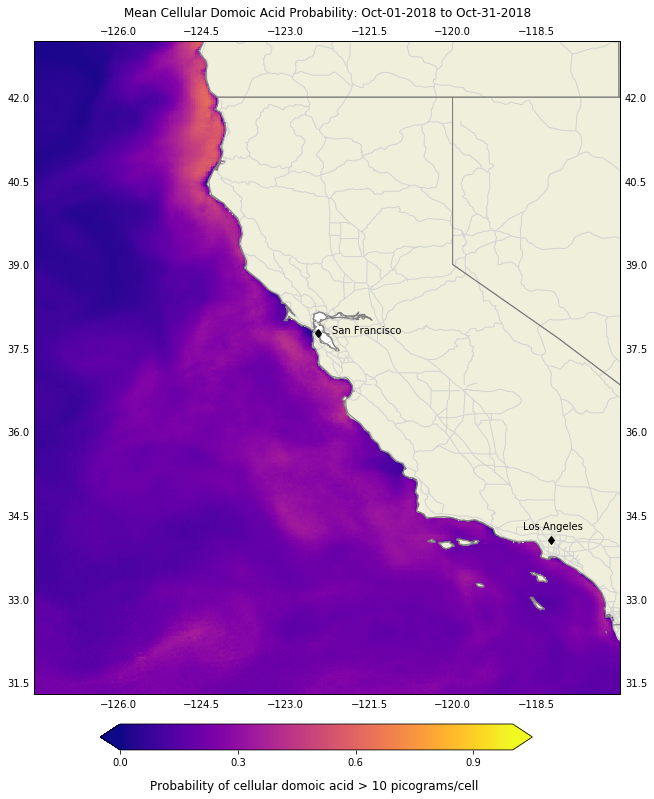
HABMAP Monitoring Sites
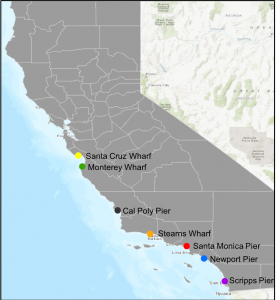
Note that data for some stations are not shown because they are not yet recorded in the public HABMAP archive, e.g. Scripps Pier data are not publicly available at this time as they undergo a rigorous quality control analysis.
Differentiating Pseudo-nitzschia species by light microscopy is difficult. For this reason, Pseudo-nitzschia "seriata" does not refer to an actual species but rather the larger size class of Pseudo-nitzschia, which is generally a more toxigenic group of species. Alternatively, Pseudo-nitzschia "delicatissima" refers to the smaller size class that is generally non-toxigenc. The dashed line on the plots demarcates the 10,000 cells/L "bloom" threshold designated here for Pseudo-nitzschia populations only.
Santa Cruz Municipal Wharf
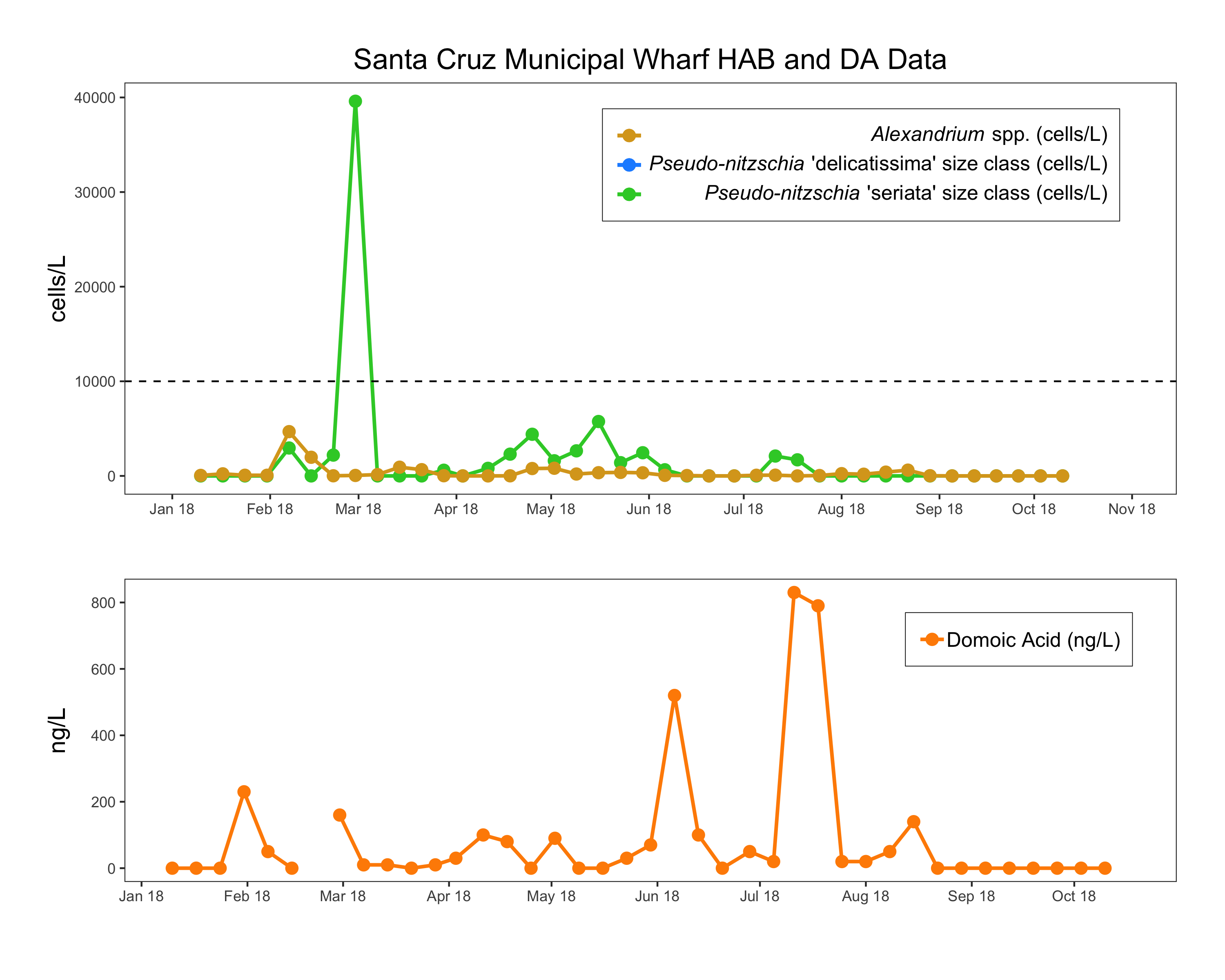
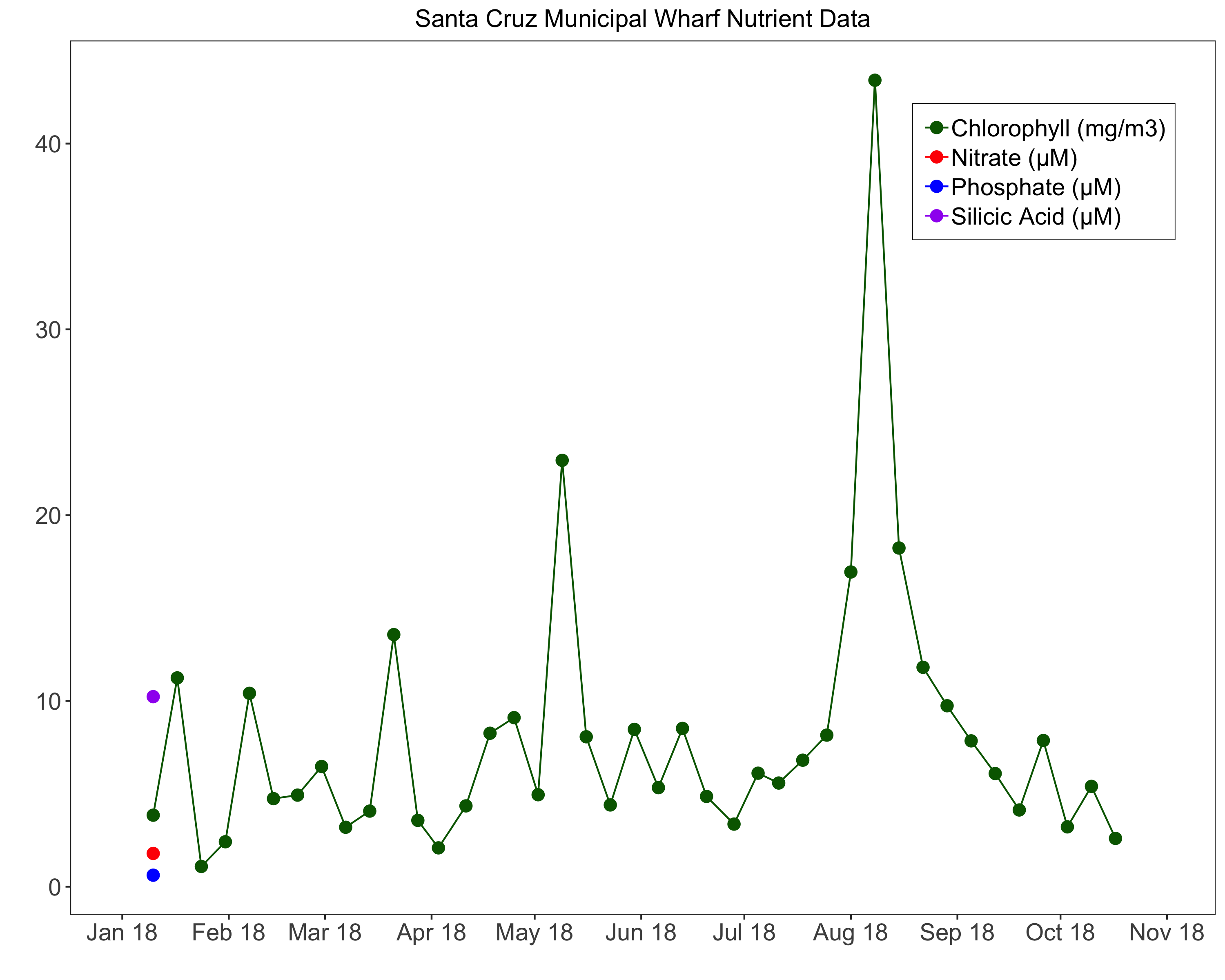
Cal Poly Pier
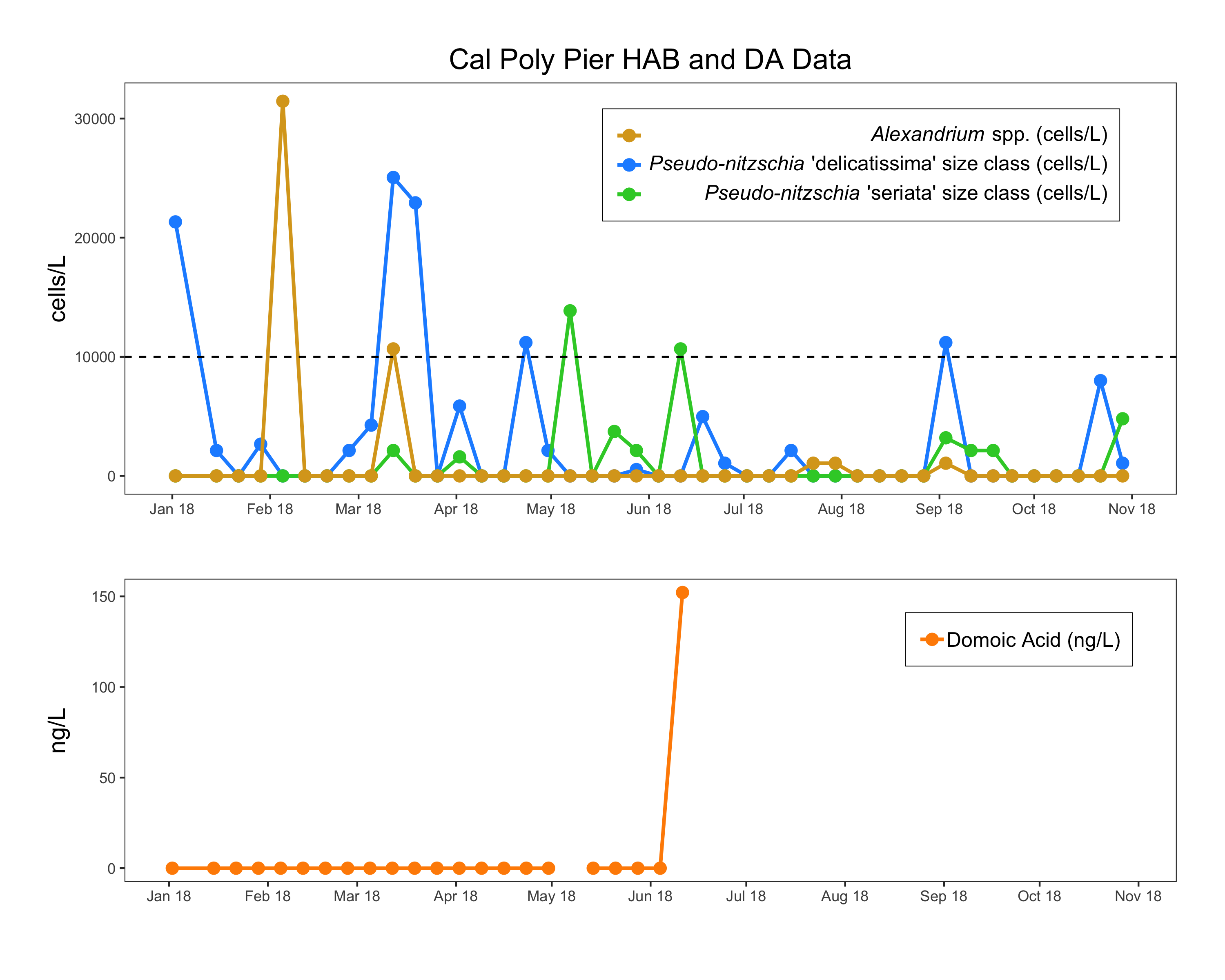
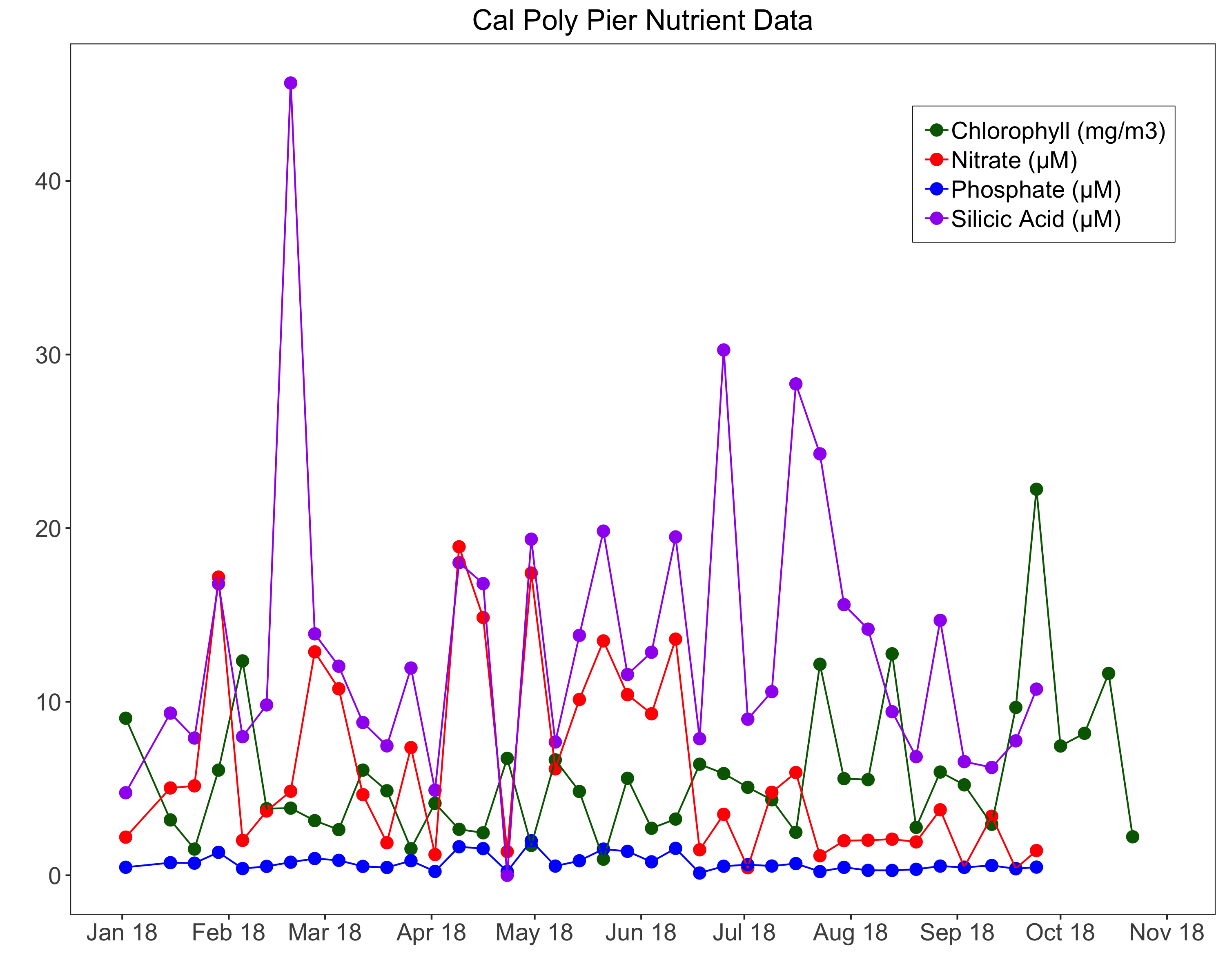
Stearns Wharf
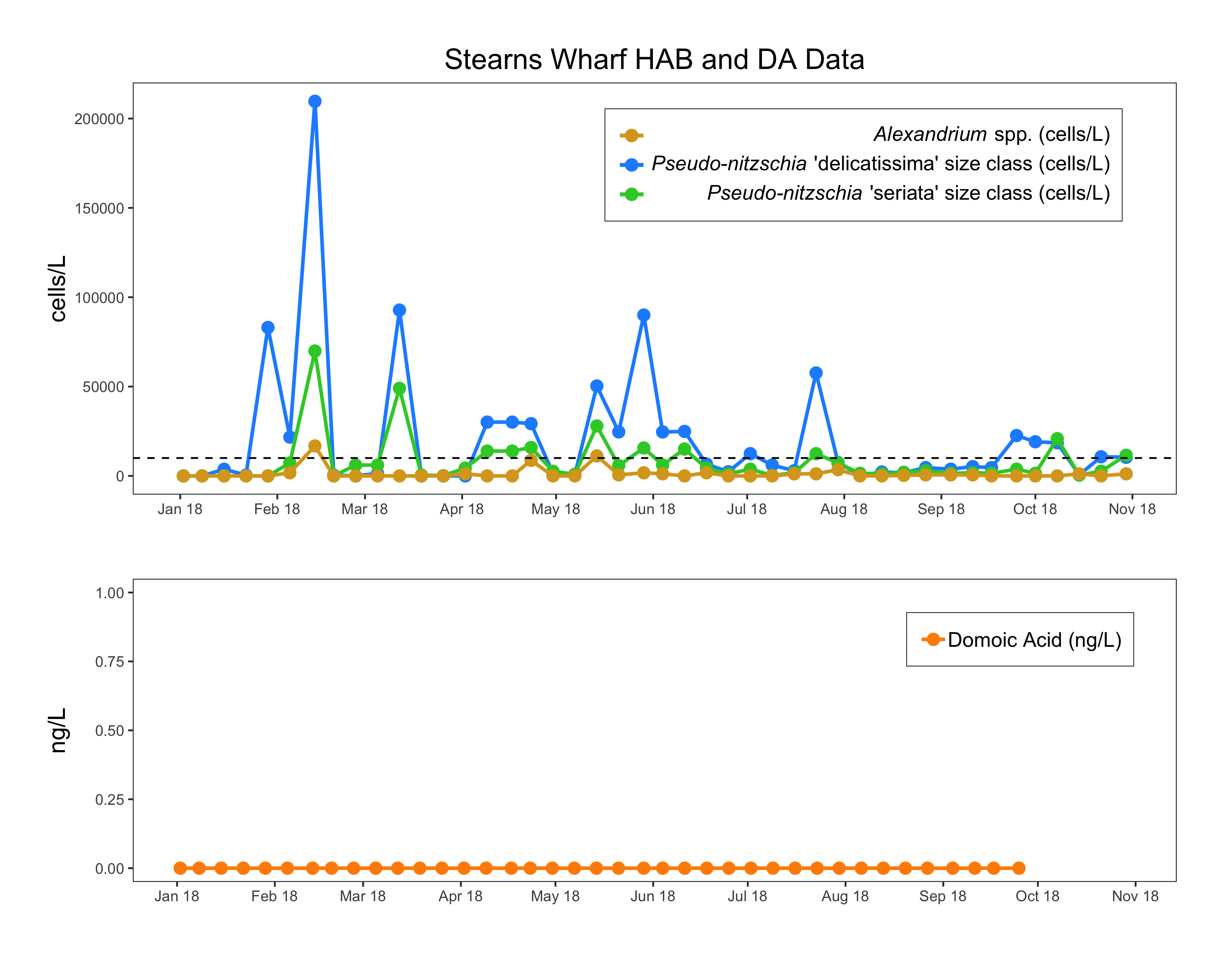
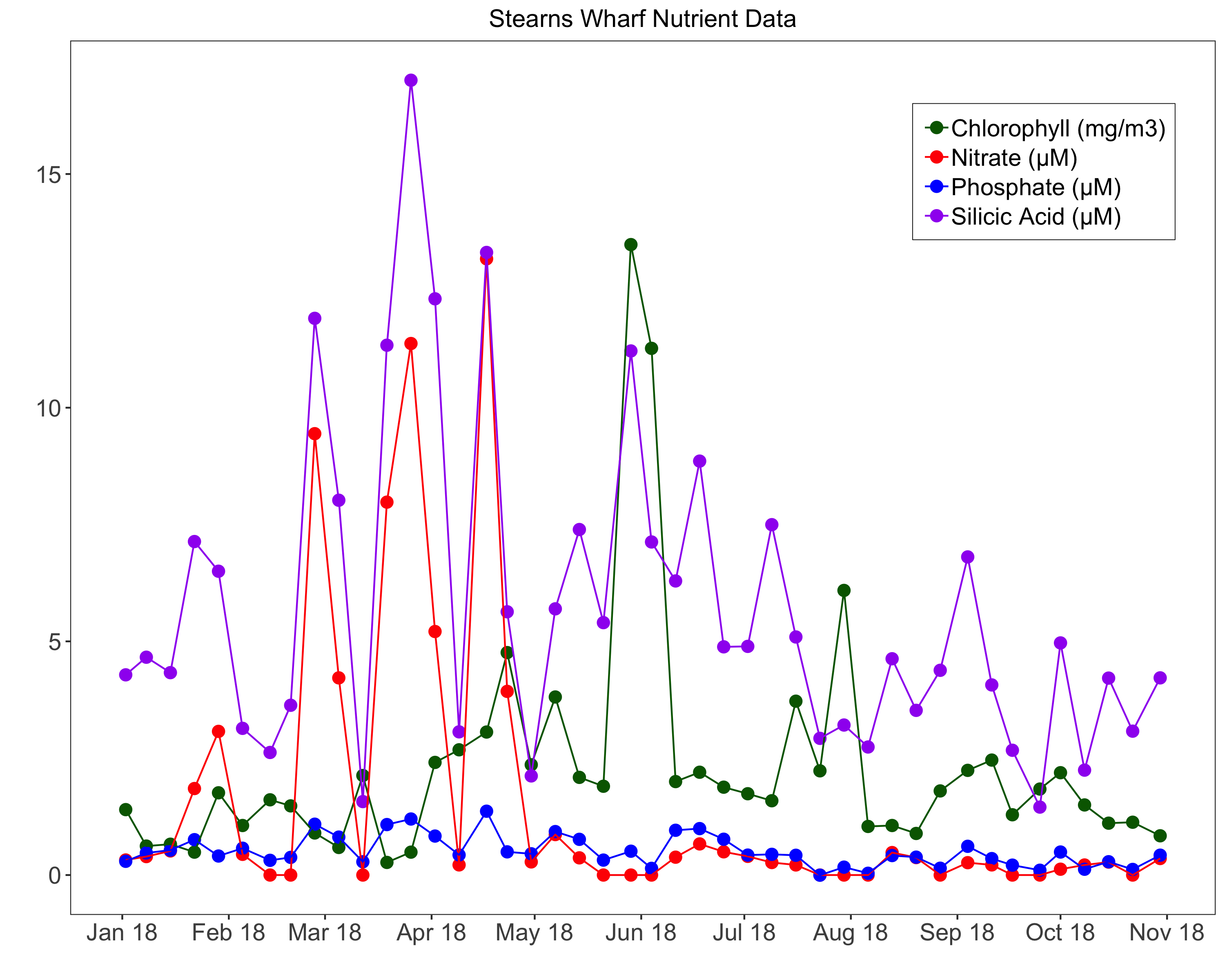
Santa Monica Pier
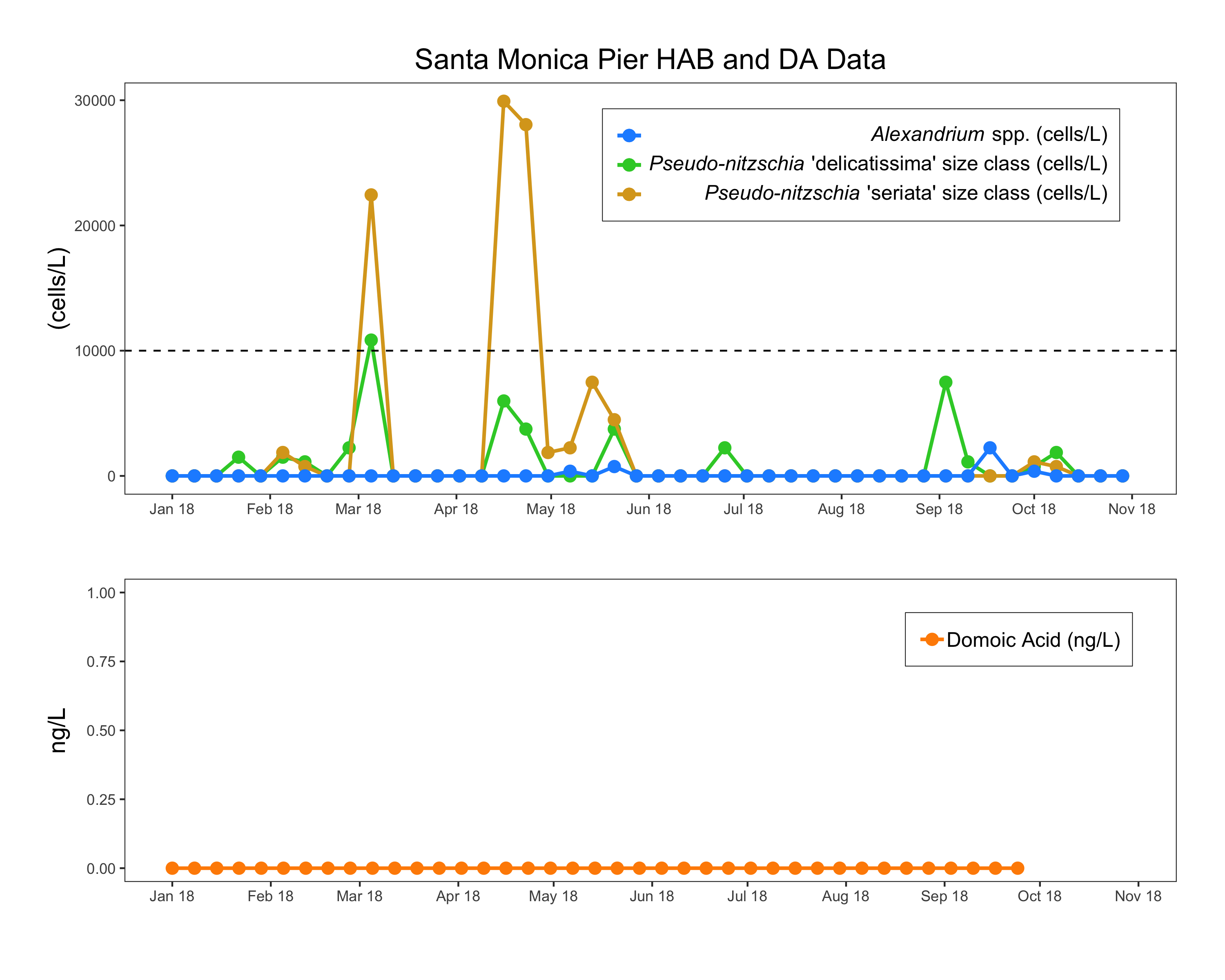
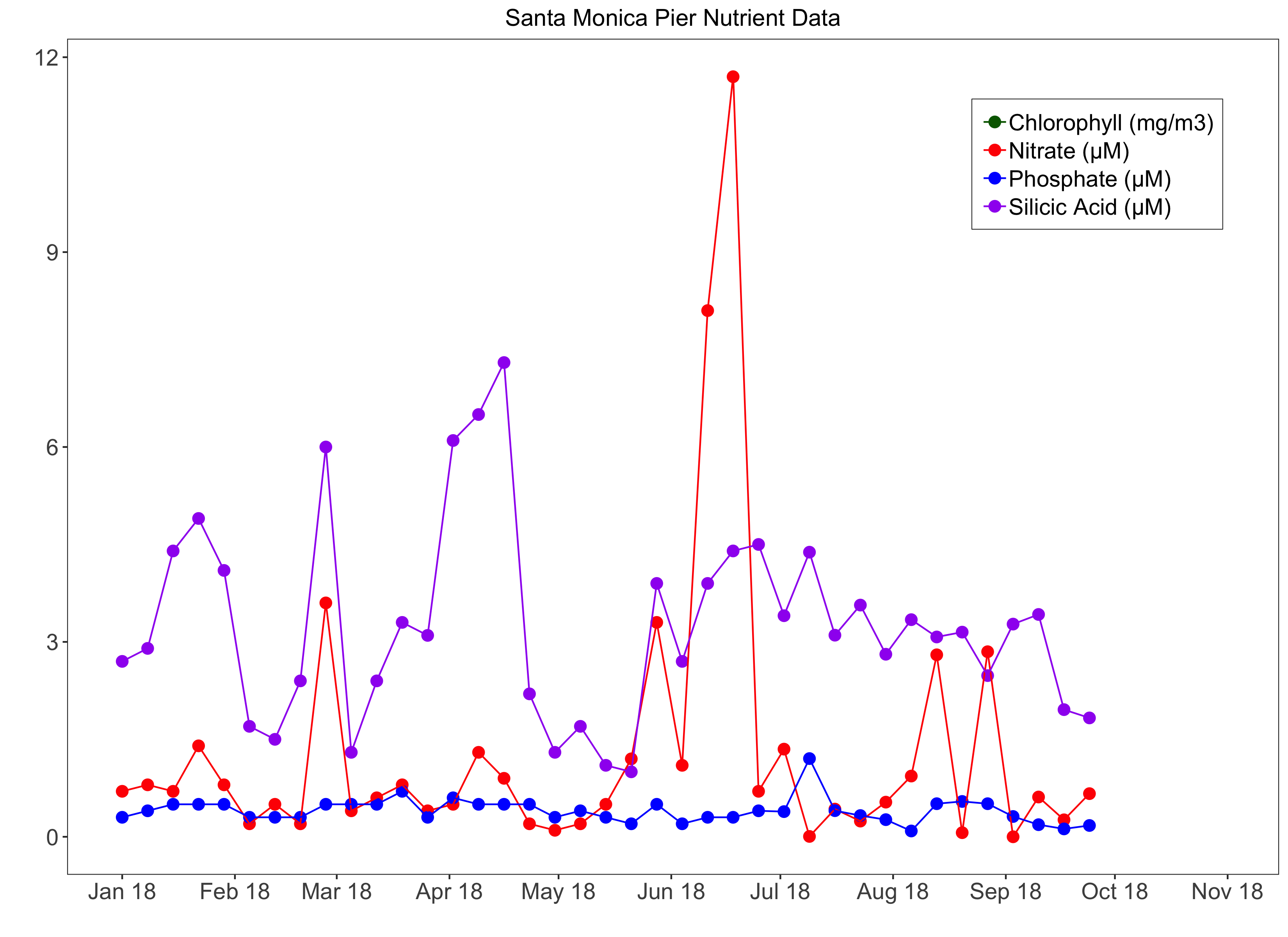
Newport Beach Pier
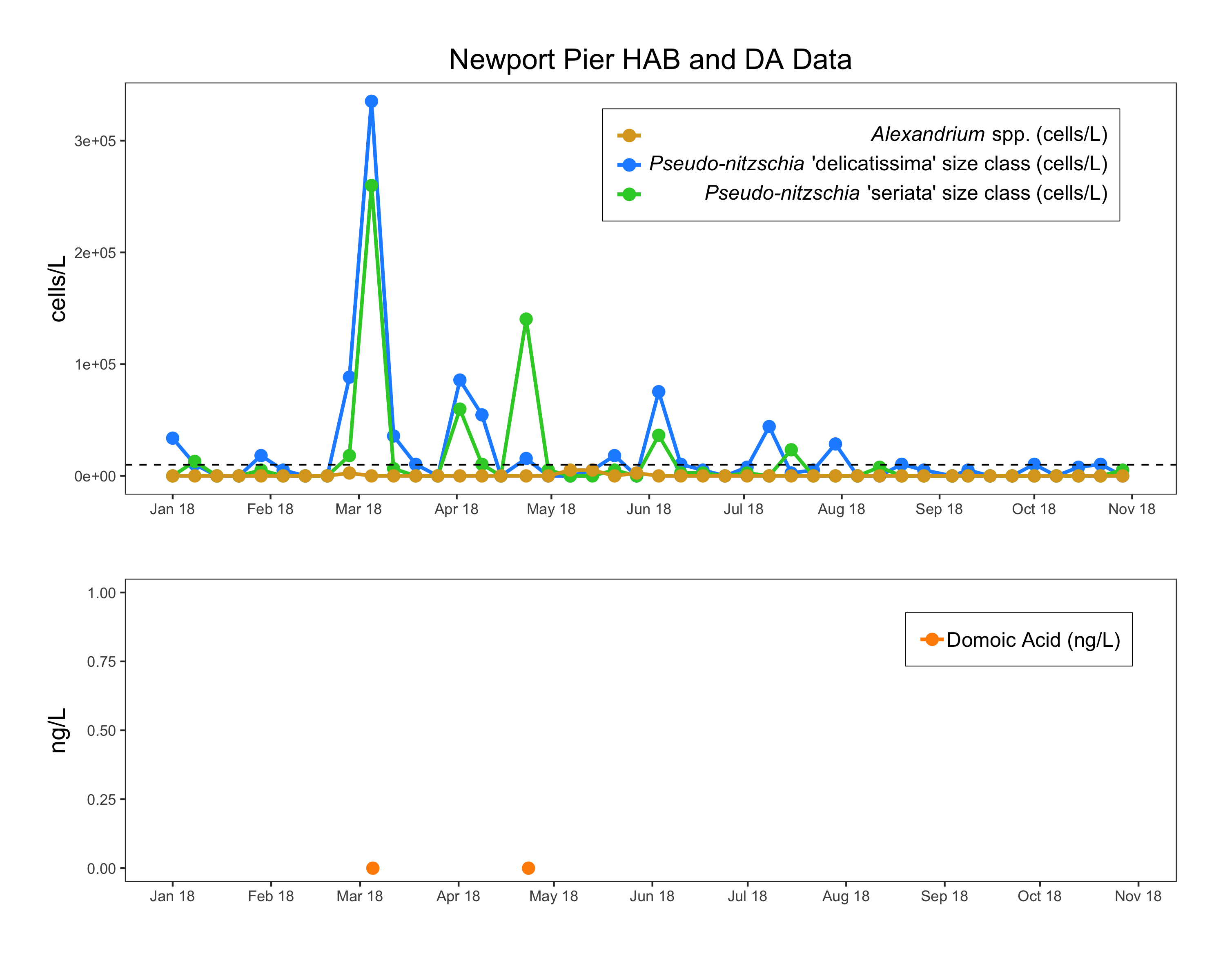
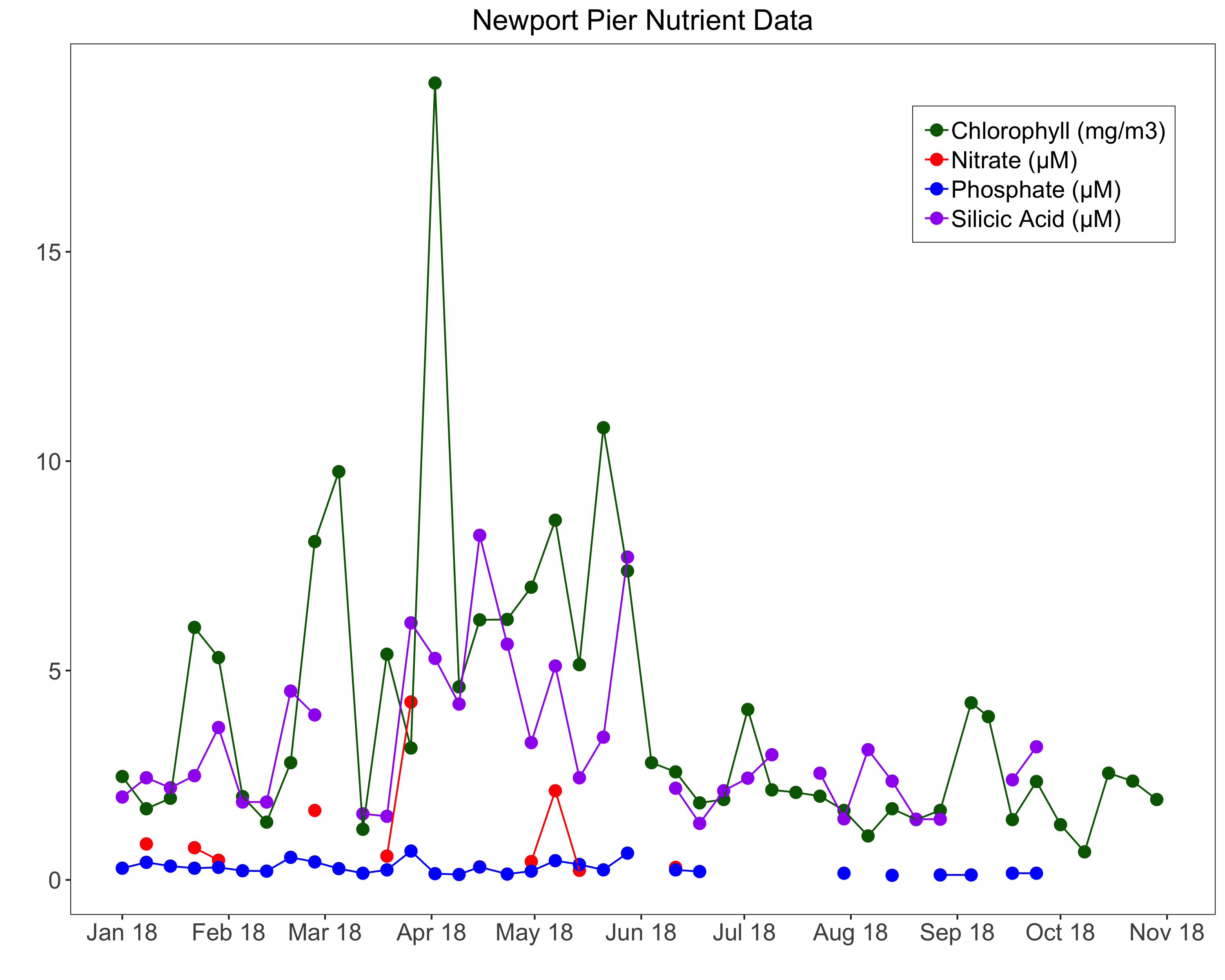
CDPH observations for Pseudo-nitzschia spp. and Alexandrium spp.
From 1-29 October 2018, water samples were collected by volunteers and sent to the California Department of Public Health (CDPH) for analysis. Pseudo-nitzschia spp. were detected in 29 of the 72 samples. Percent composition of Pseudo-nitzschia spp. was greatest on October 1st and 15th at Humboldt Bay (35% and 30% composition respectively) and October 6th at Trinidad Pier (35% composition). Alexandrium spp. were detected at low levels (<1%) in 5 of the 30 sites sampled. You can also view CDPH weekly map layers of Pseudo-nitzschia and Alexandrium here. On September 13th, CDPH released an advisory to not eat recreationally harvested shellfish in Humboldt County due to dangerous levels of domoic acid that can cause Amnesic Shellfish Poisoning (ASP).
Note the annual mussel quarantine is still in effect. The mussel quarantine is an annual event that happens due to dangerous levels of biotoxins that may be present in mussels gathered by the public anywhere on the California coast, including bays, inlets, and harbors. For the latest closures and updates, please visit the California Department of Fish and Wildlife (CDFW) Health Advisories page.
Data are provided by the California Department of Public Health, Environmental Management Branch.
October 2018
Pseudo-nitzschia spp. Percent Composition
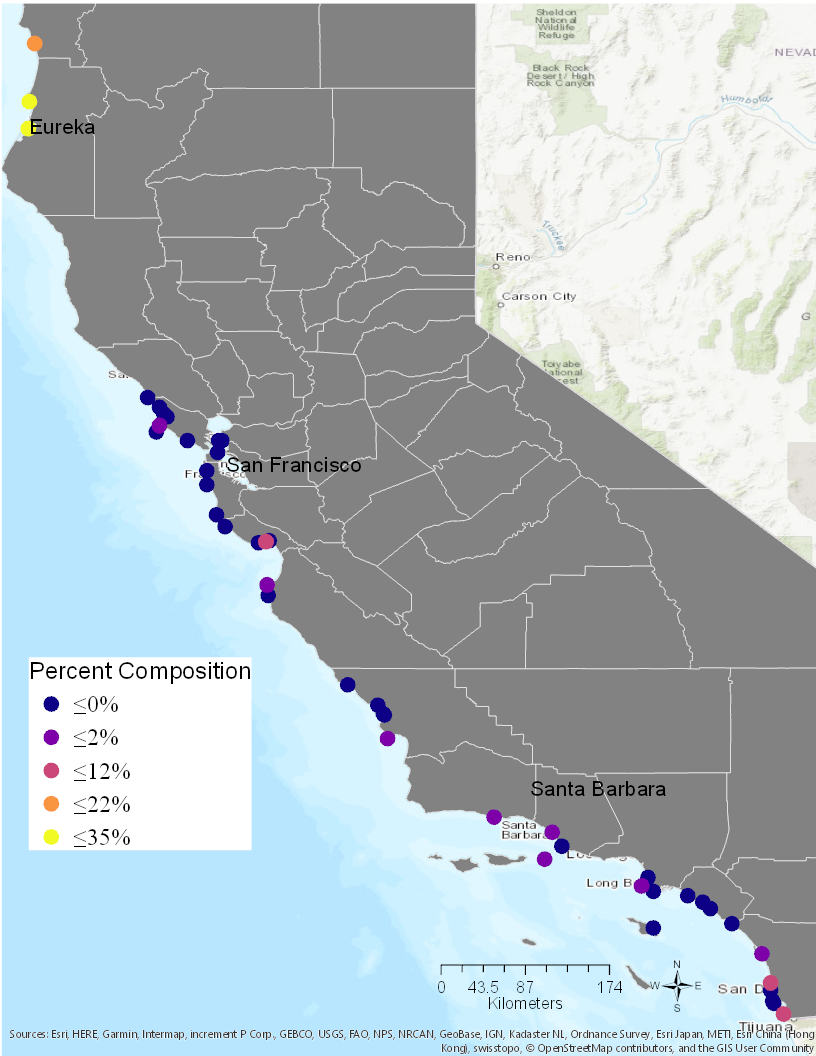
October 2018
Alexandrium spp. Percent Composition
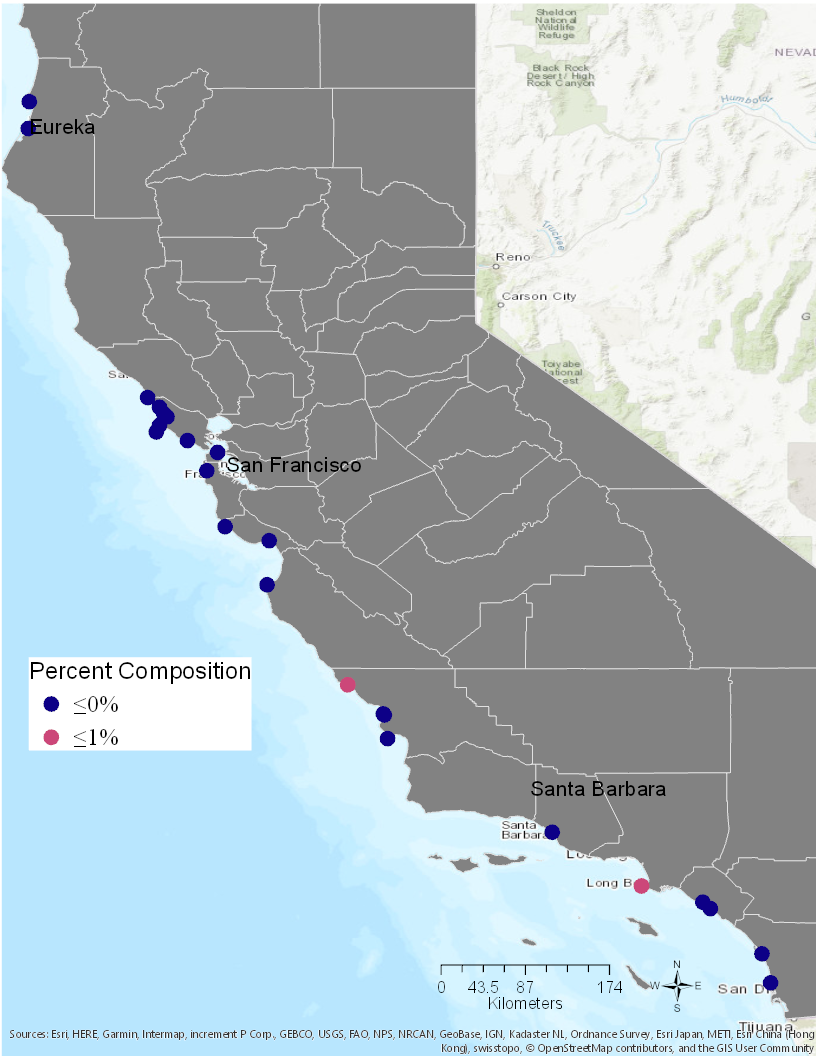
Central California Sea Lion Strandings from DA Toxicosis
The Marine Mammal Center in Sausalito, CA acts like an emergency room by working to rescue and rehabilitate sick and injured marine mammals, primarily California Sea Lions (Zalophus californianus). There have been a total of 83 sea lion strandings presenting with symptoms of domoic acid toxicosis since January 2018, with five sea lion stranding in the month of October.
No DA toxicosis cases have been reported by the Pacific Marine Mammal Center in 2018.
October sea lion strandings due to DA toxicosis occurred at the following locations:
- October 3rd, 2018 - South of Fort Ross Cove, Jenner, Sonoma
- October 5th, 2018 - Pelican Point RV Park, Half Moon Bay, San Mateo
- October 12th, 2018 - Avila Pier, Avila Beach, San Luis Obispo
- October 18th, 2018 - Port San Luis, Avila Beach, San Luis Obispo
- October 23rd, 2018 - Mitchells Cove, Santa Cruz, Santa Cruz
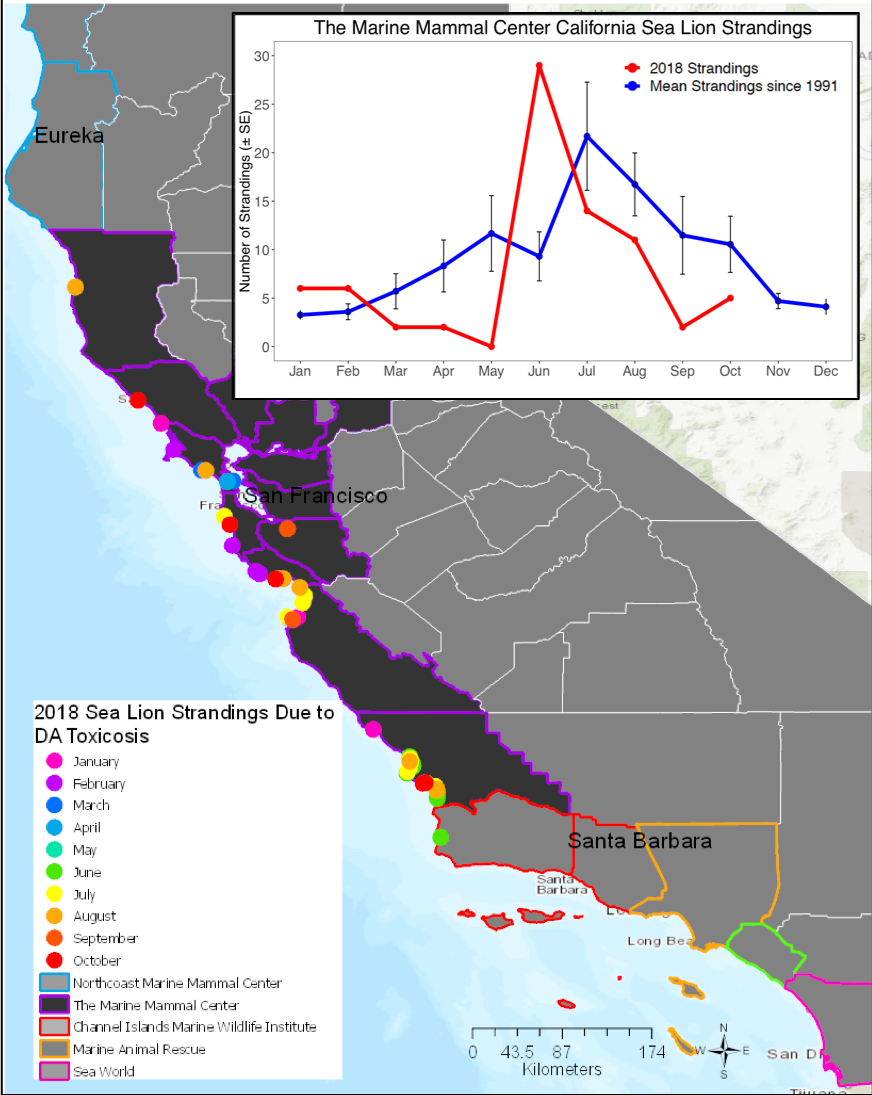
Who to call if you find a stranded marine mammal or sea turtle
Sea World of California 800-541-7325
- San Diego County
Pacific Marine Mammal Center 949-494-3050
- Orange County
Marine Animal Rescue 800-399-4253 and California Wildlife Center 310-458-9453
- Los Angeles County
Channel Islands Marine Wildlife Institute 805-567-1505
- Santa Barbara County
- Ventura County
The Marine Mammal Center 415-289-7325
- Alameda County
- Contra Costa County
- Marin County
- Mendocino County
- Monterey County
- Napa County
- Sacramento County
- San Francisco County
- San Luis Obispo
- San Mateo County
- Santa Cruz County
- Sonoma County
Northcoast Marine Mammal Center 707-951-4722
- Del Norte County
- Humboldt County
